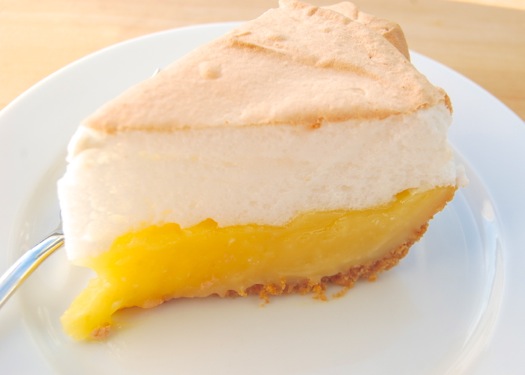Making Lemon Meringue Pie

This is what you call a classic American lemon meringue pie: a light, frothy-sweet baked egg foam above, a tart and creamy curd filling below, all heaped up on a delicate crumb (or traditional) pie crust. Not much not to like here in my opinion. Indeed lemon meringue consistently ranks about fifth on the list of the America’s favorite pies. It would probably rank higher if more people made this pie at home, but its reputation for fussiness scares a lot of home bakers away.
That reputation is deserved to some extent. Under-baked meringue toppings often cause weeping, and are quite common as the very center of the pie is hard to fully heat without breaking the lemon custard (which causes another kind of weeping). Large pools of syrup are commonly found in pie plates, either upon cutting or the next day after any leftovers have had a chance to sit. The process below is designed to avoid that problem, and it works very well. However it is something of a dance, so I strongly encourage you to have all of your ingredients and component parts prepared and laid out on the counter before you begin. There’ll be much less confusion that way.
READ ON